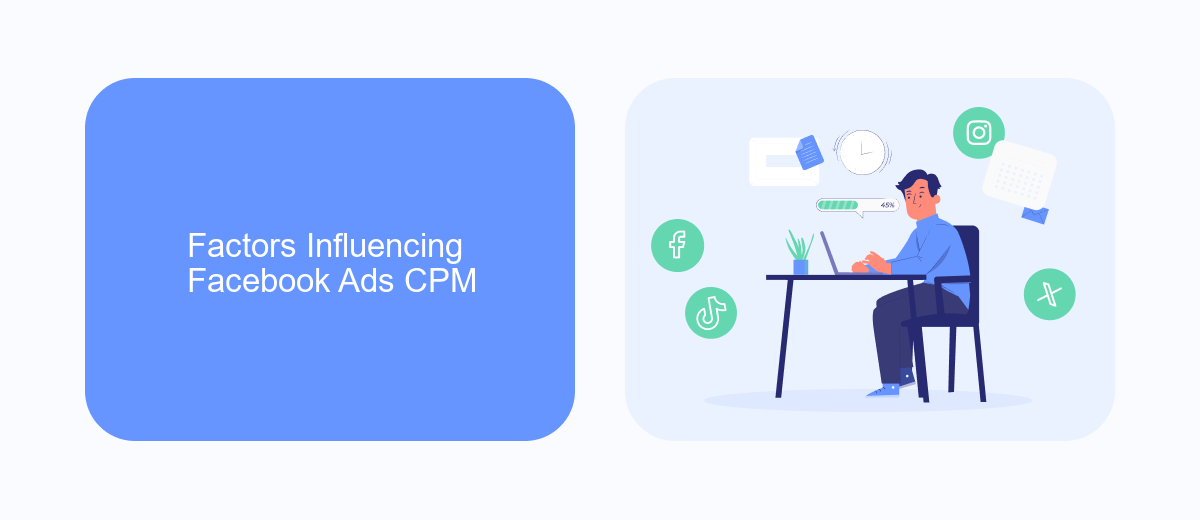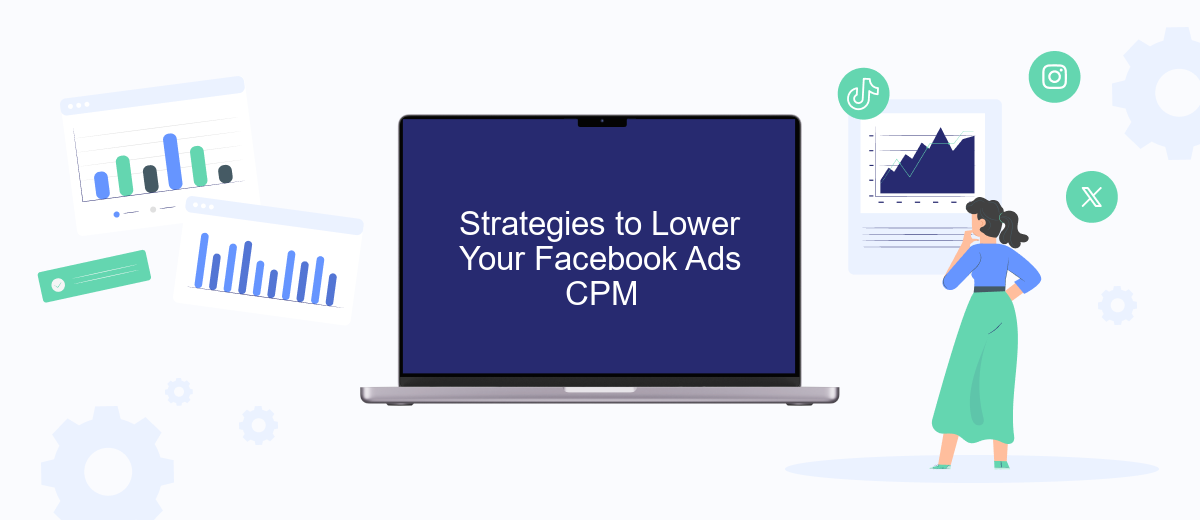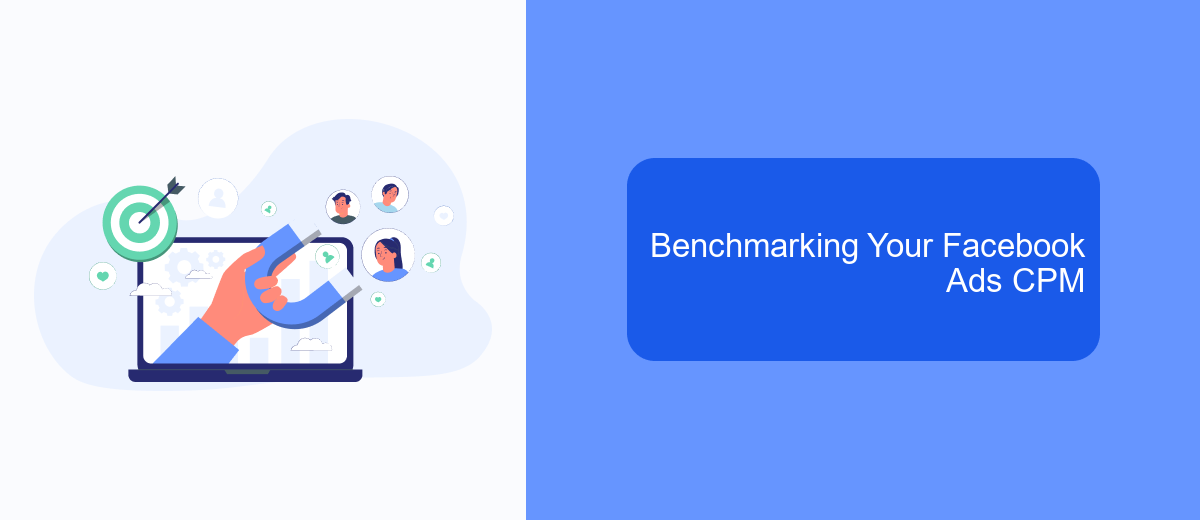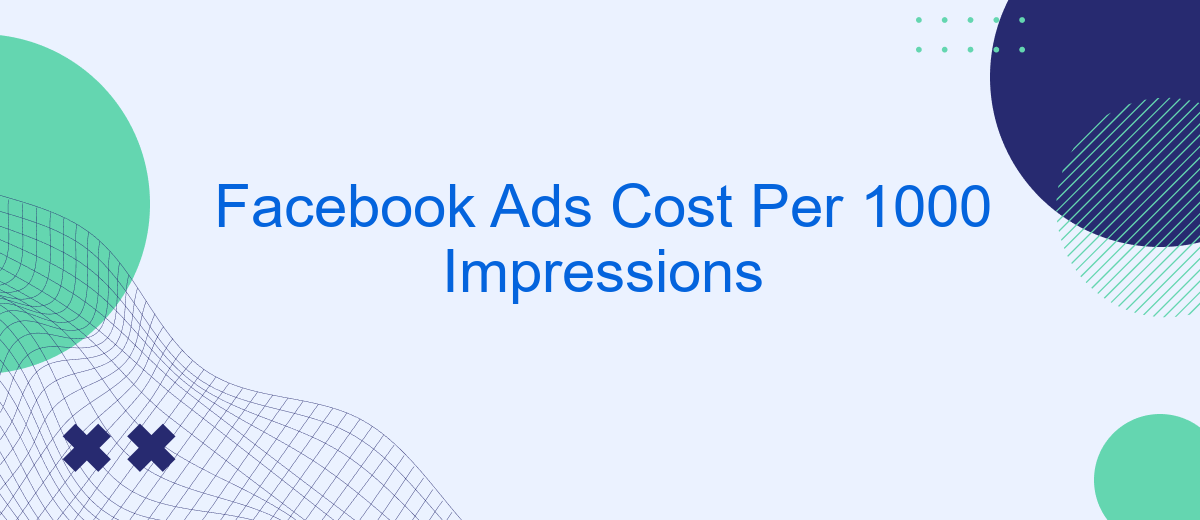Understanding the cost of Facebook Ads per 1000 impressions, often referred to as CPM (Cost Per Mille), is crucial for businesses aiming to optimize their advertising budgets. This metric helps advertisers gauge the efficiency and reach of their campaigns on the platform. By analyzing factors that influence CPM, such as audience targeting and ad quality, businesses can make informed decisions to maximize their return on investment.
Understanding Facebook Ads CPM (Cost Per 1000 Impressions)
Understanding the Cost Per 1000 Impressions (CPM) on Facebook Ads is crucial for optimizing your advertising budget and maximizing your campaign's reach. CPM is a metric that represents the cost you pay for every 1,000 impressions your ad receives. It is a key performance indicator that helps advertisers evaluate the efficiency and effectiveness of their ad spend. By analyzing CPM, businesses can determine how well their ads are performing in terms of visibility and reach.
- CPM is influenced by factors such as target audience, ad placement, and competition.
- Higher CPM might indicate a competitive market or highly targeted audience.
- Lower CPM can suggest broader reach but potentially less targeted engagement.
- Adjusting ad creatives and targeting can help optimize CPM.
To make the most of your Facebook advertising budget, it's essential to continuously monitor and adjust your campaigns based on CPM insights. By understanding the factors that affect CPM, advertisers can make informed decisions to improve ad performance and achieve their marketing objectives efficiently. Regular analysis and optimization can lead to more cost-effective campaigns with better results.
Factors Influencing Facebook Ads CPM

Several factors influence Facebook Ads CPM (Cost Per Mille), which is the cost per 1,000 impressions. One of the primary factors is the target audience. Advertisers aiming at a highly competitive audience segment will likely face higher CPMs due to increased demand. Additionally, the ad's relevance score, determined by user engagement and feedback, plays a crucial role. Ads with higher relevance scores are generally rewarded with lower CPMs, as they are more likely to resonate with the audience.
Another significant factor is the time of year. During peak advertising seasons, such as the holiday period, CPMs tend to rise due to heightened competition. Furthermore, ad placement can affect CPM, with ads placed in more prominent positions typically costing more. Utilizing integration services like SaveMyLeads can optimize ad performance by ensuring seamless data flow and targeting, potentially reducing costs. Lastly, the quality of ad creatives, including visuals and messaging, can impact CPM, as engaging content often leads to better performance and lower costs.
Strategies to Lower Your Facebook Ads CPM

Lowering your Facebook Ads CPM can significantly improve your advertising ROI. To achieve this, it's essential to focus on optimizing various elements of your ad campaigns. Consider the following strategies to effectively reduce your costs:
- Target Audience Refinement: Narrow down your audience to those most likely to engage with your ads. Use Facebook’s detailed targeting options to reach the right people.
- Ad Quality Improvement: Create high-quality, engaging ads that resonate with your audience. Facebook rewards ads with higher engagement rates by lowering CPM.
- A/B Testing: Continuously test different ad creatives, formats, and placements to identify what works best. Use insights from these tests to make data-driven adjustments.
- Optimal Bidding Strategy: Experiment with different bidding strategies such as cost cap or bid cap to find the most cost-effective approach for your goals.
- Ad Scheduling: Run your ads during peak engagement times to maximize visibility and reduce unnecessary spending.
By implementing these strategies, you can effectively lower your Facebook Ads CPM, ensuring that your advertising budget is utilized efficiently. Regularly monitor your campaign performance and make necessary adjustments to maintain optimal results.
Benchmarking Your Facebook Ads CPM

Understanding how your Facebook Ads CPM (Cost Per 1000 Impressions) compares to industry standards is crucial for optimizing your advertising strategy. Benchmarking allows you to assess the effectiveness of your campaigns and make informed decisions about budget allocation and targeting. By comparing your CPM to industry averages, you can identify areas for improvement and maximize your return on investment.
Several factors can influence your CPM, including your target audience, ad quality, and competition within your industry. It's important to regularly evaluate these elements to ensure your campaigns are performing at their best. By doing so, you can adjust your strategies to achieve more cost-effective results.
- Research industry-specific CPM benchmarks to understand where you stand.
- Analyze your audience demographics and refine targeting to reduce costs.
- Improve ad quality to increase engagement and lower CPM.
- Continuously monitor and adjust your campaigns based on performance data.
Regularly benchmarking your Facebook Ads CPM can provide valuable insights into your advertising performance. By staying informed about industry trends and adjusting your strategies accordingly, you can ensure your campaigns are both effective and efficient. This proactive approach will help you achieve your marketing goals while maintaining a competitive edge in the digital landscape.
Analyzing and Optimizing Your CPM for Better Results
To effectively analyze and optimize your CPM (Cost Per 1000 Impressions) for Facebook Ads, start by closely monitoring your ad performance metrics. Utilize Facebook Ads Manager to track key indicators such as click-through rate (CTR), conversion rate, and audience engagement. Identifying patterns and trends in these metrics can help you understand what resonates with your audience and what doesn't. Additionally, consider A/B testing different ad creatives, headlines, and targeting options to determine which combinations yield the best results. This data-driven approach will enable you to make informed decisions and refine your ad strategies for improved CPM outcomes.
Optimizing your CPM involves more than just tweaking ad creatives. Streamline your lead management process by integrating tools like SaveMyLeads, which automates data transfer from Facebook Lead Ads to your CRM or email marketing platforms. This integration ensures timely follow-ups and enhances your customer engagement, ultimately improving your ad performance. By leveraging automation and continuously refining your ad strategies based on performance insights, you can achieve a more cost-effective CPM and drive better results for your advertising efforts.
FAQ
What is Cost Per 1000 Impressions (CPM) in Facebook Ads?
How is CPM calculated on Facebook?
What factors influence the CPM for Facebook Ads?
How can I reduce the CPM for my Facebook Ads?
Is a high CPM always a bad thing?
Don't waste another minute manually transferring leads from Facebook to other systems. SaveMyLeads is a simple and effective tool that will allow you to automate this process so that you don't have to spend time on the routine. Try SaveMyLeads features, make sure that this tool will relieve your employees and after 5 minutes of settings your business will start working faster.
